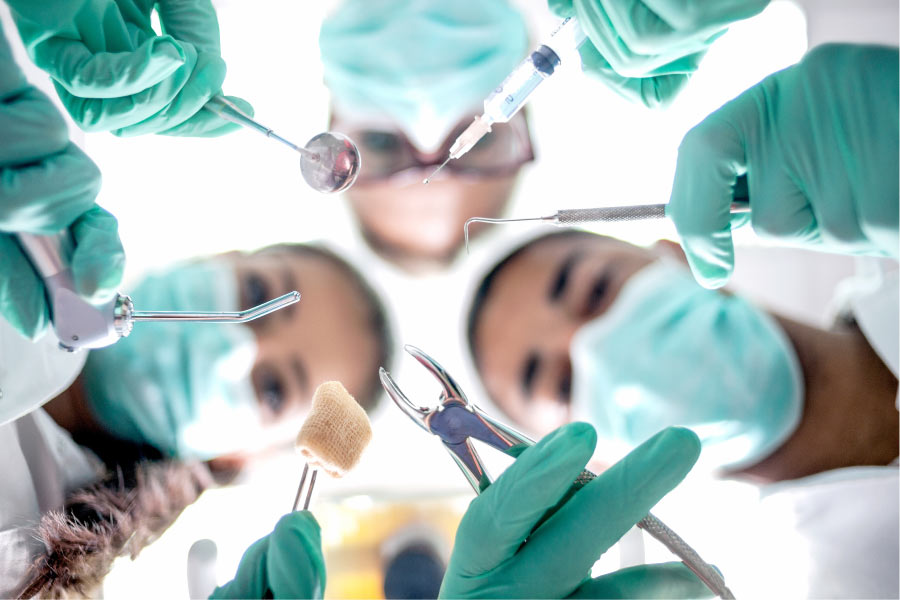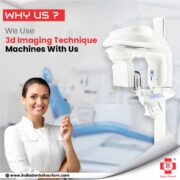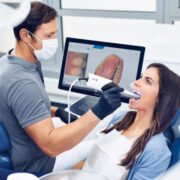The hidden world of dental surgery setup is found in the quiet hallways of medicine, where artistic sensibility and exactitude collide. It’s more than just a place to do operations; it’s a painting for dental artists, a symphony of painstaking preparations, and a ballet of instruments. With insights from the deft hands and perceptive eyes of dentist Dr. Chirag Chamria of Royal Dental Clinics, let’s lift the curtain today and explore the inner workings of a surgical setup.
Understanding Surgical Setup
In the field of dentistry, a surgical setup is the meticulously prepared and sterile setting used for dental operations. It includes a wide range of components, such as the actual area, the equipment, the lighting, and the general configuration of the instruments needed to perform dental procedures.
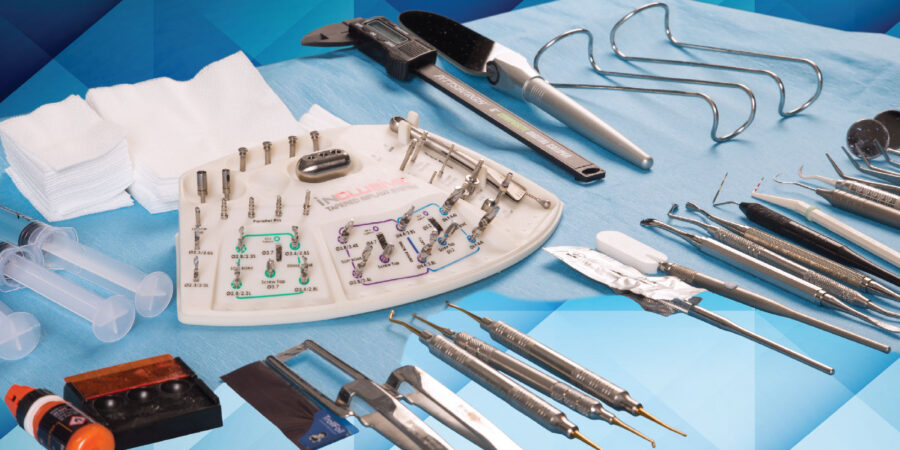
One cannot stress the importance of having a well-prepared surgical environment. It serves as the cornerstone for safe and effective dental operations. The main objectives of a surgical setup are to guarantee the environment’s sterility and cleanliness, supply the instruments required for accurate dental work, and create an atmosphere that inspires confidence and comfort in both the dentist and the patient.
Dr. Chirag Chamria’s Perspective: Impact of an Organised Setup
A well-organized surgical setting has a tremendous influence on dental treatments, as Dr. Chamria explains. From his point of view, a well-organized setup is essential to the entire patient experience, not just a technological one. Both the patient and the dental staff feel more confident in an orderly and clean atmosphere.
It makes workflows more efficient, lowers the chance of infections, and improves the accuracy of dental procedures. The surgical setting is perhaps one of the most important factors in Dr. Chamria’s opinion, as it affects both the general pleasure of his patients and the effectiveness of treatments.
Common Challenges by Dentist without Surgical Arrangements
Dentists facing inadequate or poorly organized surgical setups encounter various challenges that can impact the quality of patient care and the effectiveness of dental procedures. Some common challenges include:
- Without proper sterilization and cleanliness measures, there is an increased risk of infection for both the dental team and the patients.
- A disorganized setup can lead to inefficiencies in workflows, causing delays in procedures and potentially affecting the overall productivity of the dental practice.
- A chaotic or uncomfortable environment can contribute to patient anxiety and discomfort, making it more challenging for both the patient and the dentist to navigate through procedures smoothly.
- Inadequate access to properly arranged instruments and tools can compromise the precision required for certain dental treatments, potentially leading to suboptimal results.
Essential Components of a Surgical Setup
Sterilization and Infection Control Measures
- Autoclave: A device used to sterilize dental instruments by subjecting them to high-pressure, saturated steam.
- Disinfectants: Chemical agents employed to disinfect surfaces and equipment, ensuring a sterile environment.
- Sterile Drapes and Covers: Essential for maintaining the sterility of the working area.
Dental Chair and Operator’s Stool
- Adjustable Dental Chair: This chair provides a comfortable position for the patient and facilitates easy access for the dentist.
- Operator’s Stool: an adjustable stool for the dentist to maintain ergonomic posture during procedures.
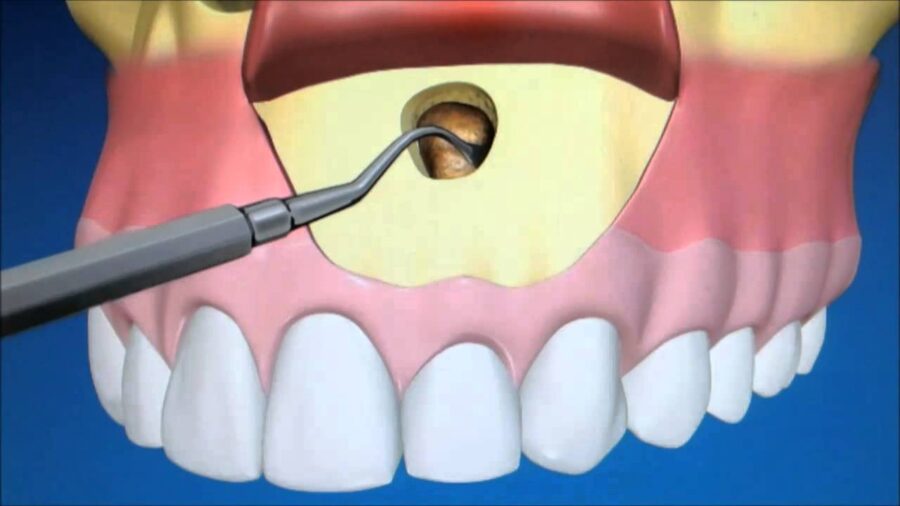
Lighting and Magnification Tools
- Dental Operating Light: An adjustable and focused light source for optimal visibility during procedures.
- Loupes or microscopes: Magnification tools that aid in precision work, allowing dentists to see details more clearly.
Surgical Instruments and Handpieces
- Handpieces: Dental drills and tools for various procedures, such as cavity preparation or tooth extraction.
- Forceps and Elevators: Instruments used for tooth extraction.
- Probes, Scalers, and Curettes: Tools for cleaning and scaling teeth during oral surgery.
Patient Monitoring Devices
- Blood Pressure Monitor: Essential for monitoring the patient’s vital signs during surgical procedures.
- Pulse Oximeter: Measures oxygen saturation in the blood, ensuring patient safety.
- ECG (Electrocardiogram) Machine: Monitors the heart’s electrical activity during surgeries.
Maintaining and Organising Equipment to Enhance Efficiency
- Conduct routine checks and maintenance on all equipment to ensure functionality.
- Adhere to strict sterilization protocols to prevent infections and maintain asepsis.
- Arrange instruments systematically on trays for easy access, minimizing procedural disruptions.
- Ensure that equipment, like dental chairs and lights, is calibrated correctly for seamless operation.
Infection Control Protocols
To protect patients and dental personnel, infection prevention in dental surgeries is crucial. Various steps are included in standard guidelines to stop the spread of infections:
- Regular and thorough handwashing using antimicrobial soap or hand sanitizers.
- Proper use of personal protective equipment (PPE), including gloves, masks, eyewear, and gowns, to protect against contact with bodily fluids.
- Regular cleaning and disinfection of all surfaces, including dental chairs, countertops, and equipment.
- Ensuring that all instruments are properly sterilised through autoclaving or other approved methods.
- Proper disposal of biomedical waste according to regulations.
Practical Tips for Infection Control Protocols
- Stay Informed: Keep abreast of the latest guidelines and recommendations from health organizations to ensure protocols are up-to-date.
- Create a Comprehensive Protocol Manual: Develop a detailed manual outlining infection control protocols specific to the dental practice. This serves as a reference for the entire team.
- Regular Team Training: Conduct regular training sessions to reinforce infection control practices and address any emerging concerns.
- Open Communication Channels: Foster an environment where team members feel comfortable reporting issues or suggesting improvements in infection control.
- Adapt to Emerging Threats: Be proactive in updating protocols in response to emerging infectious threats, as seen in the context of the evolving nature of healthcare.
Conclusion
As we come to an end of our investigation of the surgical setup in dentistry, it is clear that this is a performance art rather than just a simple technicality. The viewpoints of Dr. Chirag Chamria offer an insight into the realm where science and art collide, where accuracy meets empathy. The next time you find yourself in a dentist chair, remember that a well-planned dance is being performed behind the scenes to make sure your path to a healthy smile is nothing short of a masterpiece.

